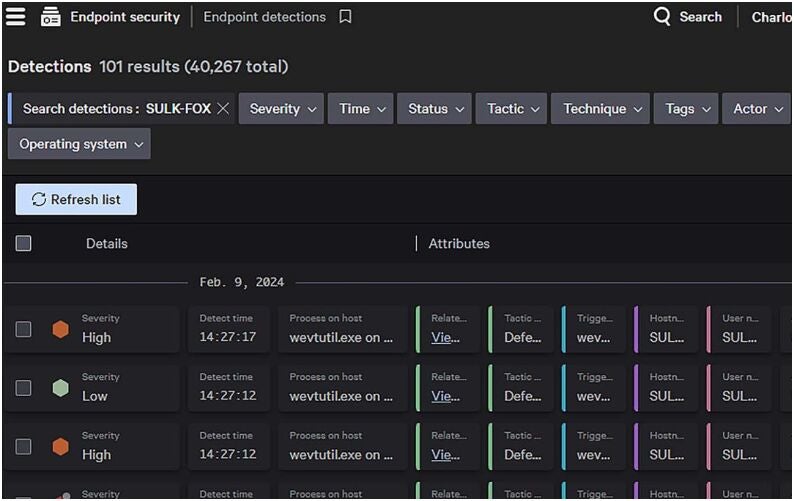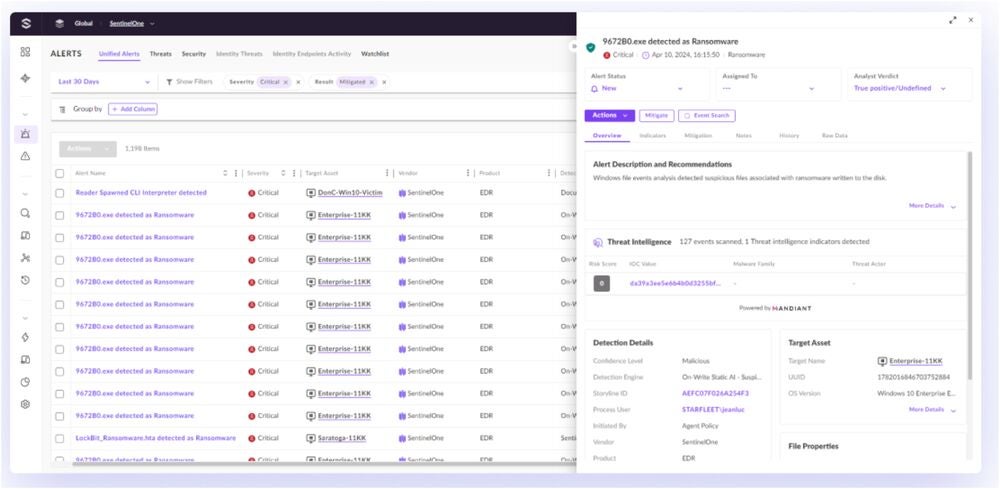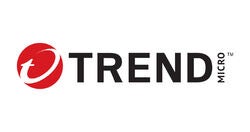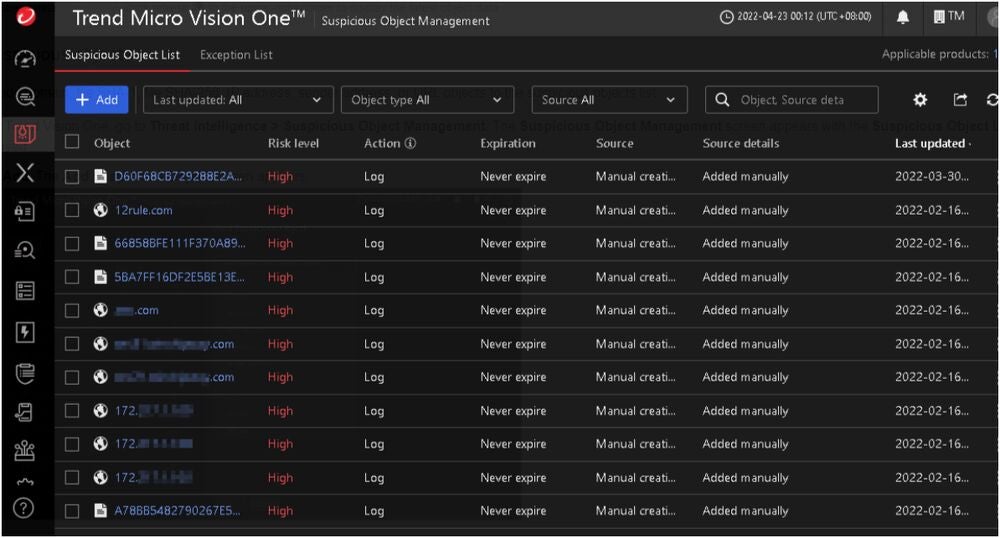
As more businesses continue to adopt hybrid work arrangements, it’s becoming increasingly important for company endpoints to be secured and protected against threats and malicious actors. Whether it’s company-issued laptops or the data stored therein, taking a proactive approach to protecting these endpoints helps keep businesses safe from data breaches or costly cyberattacks.
SEE: 10 Myths About Cybersecurity You Shouldn’t Believe (TechRepublic Premium)
Fortunately, there’s a variety of endpoint detection and response solutions available in the market today — specially designed to monitor user devices, detect threats of all kinds and offer strong remediation and response capabilities to thwart these threats.
In this article, we take a look at the best endpoint detection and response software available today.
| CrowdStrike Falcon | SentinelOne Singularity |
Microsoft Defender for Endpoint | Trend Micro Vision One | Bitdefender GravityZone | |
|---|---|---|---|---|---|
| Forrester Wave Q4 2023 results | Leader | Strong Performer | Leader | Leader | Leader |
| Ease of use (Gartner Peer Insights) |
4.7 out of 5 | 4.8 out of 5 | 4.3 out of 5 (Ease of deployment; no ease of use rating) | 4.5 out of 5 (Ease of deployment; no ease of use rating) | 4.6 out of 5 |
| Free trial or demo | Free trial upon request | Demo upon request | Free trial available | Demo upon request | Free trial upon request |
| Starting price | $184.99 per device per year | $79.99 per device per year | $54.75 per user per month (Microsoft 365 E5 bundle) | Contact Trend Micro for pricing. | $199.49 per year for 10 devices |
Considered one of the market leaders in the EDR space, I recommend CrowdStrike’s Falcon Insight platform for most businesses. It offers top-tier AI-powered detection capabilities, a lightweight and unified agent and the ability to automate enterprise-scale tasks for improved efficiency and security.
SEE: Check Point vs Palo Alto: Compare EDR Software (TechRepublic)
In 2023, CrowdStrike was named a Leader in Gartner’s Magic Quadrant for Endpoint Protection Platforms and garnered the top spot in both the Ability to Execute and Completeness of Vision criteria among 15 other solutions. These two markers mean that CrowdStrike’s EDR solution is best in class in terms of its product development, innovation and customer base.
Users have also lauded the CrowdStrike platform for being light on resources and providing very low false positive rates.

I chose CrowdStrike Falcon as my best overall solution due to its industry-leading features and performance, as well as its strong customer reviews. Not only does CrowdStrike perform well in independent tests, it also receives high praise from its user base and is commonly tagged the “go-to” EDR software provider today.
SEE: Fortinet vs Palo Alto: Comparing EDR Software (TechRepublic)
While many solutions can offer tons of features in their software, I think the real test is how many actual users recommend the product to other companies. In this aspect, CrowdStrike succeeds — even with its more expensive price tag.
CrowdStrike’s Falcon EDR solution can be purchased through its Falcon Enterprise and Falcon Elite subscription plans. Below is a quick overview of pricing and features for each:

For small businesses, I suggest trying SentinelOne Singularity Endpoint. While not as robust as CrowdStrike, SentinelOne offers more affordable pricing while still providing high-quality detection and response services. It includes static and behavioral detection, automated responses and one-click remediation, making it easier for IT and security teams to keep infrastructures and endpoints secure.
SEE: SentinelOne vs Palo Alto: Compare EDR Software (TechRepublic)
I particularly like SentinelOne’s Storyline feature that automatically correlates and contextualizes all software events in real-time, offering a holistic view of threats that arise.

SentinelOne carved its name on this list for being a competent alternative to CrowdStrike, especially for smaller businesses that may not have the largest of cybersecurity budgets to use for an EDR.
Like CrowdStrike, SentinelOne Singularity Endpoint also receives good marks from the community. In particular, users highlighted SentinelOne Singularity’s easy to use console and affordable overall pricing.
SentinelOne offers its EDR solution through four subscription tiers, with varying feature inclusions catered toward specific business sizes and needs. Below is a quick overview of each tier, with their corresponding pricing and feature differences:

For businesses already deep into the Microsoft ecosystem, I find Microsoft Defender for Endpoint, or MDE, to be a no-brainer. It utilizes AI-based systems to stop cyber and ransomware attacks, includes automated investigation and remediation capabilities and has access to a global threat intelligence database.
SEE: Carbon Black vs. CrowdStrike: EDR Software Comparison (TechRepublic)
MDE is also highly rated by independent testing firms and was named a Leader in Gartner’s 2023 Magic Quadrant for Endpoint Protection Platforms.

I picked Microsoft Defender for Endpoint because of its strong integration with other Microsoft 365 products, as well as its accessible inclusion in Microsoft’s E5 enterprise subscription. This makes it easy for pro-Microsoft businesses to integrate a proper EDR solution with their security setup, especially if they already have Microsoft licenses as part of their portfolio of software tools.
Microsoft Defender for Endpoint is split into two plans: MDE P1 and P2. MDE P1 includes next-generation antimalware and endpoint firewall capabilities. Meanwhile, MDE P2 includesfull EDR functionality, with automated investigations and remediation, among others.
For businesses that want Microsoft’s full-fledged EDR solution, I recommend going for Microsoft Defender for Endpoint P2 or MDE P2.Right now, MDE P2 is bundled with the Microsoft 365 E5 enterprise software bundle:

A veteran of the space, Trend Micro is still a good pick for businesses that want an all-in-one type of security software. Its Vision One solution provides tools to protect endpoints, emails and networks from a single platform. It features broad extended detection and response, or XDR, sensor coverage and contextualization tools for analysts. It is built upon zero-trust networking principles.
SEE: CrowdStrike vs Sophos: EDR Software Comparison (TechRepublic)
Vision One recently received high marks in the Forrester Wave Endpoint Security Q4 2023 evaluation, wherein Forrester named the company a Leader in the endpoint security industry. In particular, Trend Micro’s “consistent protection of endpoints” and “granular application control platform” were highlighted in the assessment.

While not strictly an EDR solution, Trend Micro Vision One presents good value as an XDR product offering that can provide comprehensive protection to multiple layers of an organization’s infrastructure. This means that Vision One protects not only endpoints but also other aspects of a technology ecosystem, such as the cloud, emails and the like.
I have Trend Micro on this list given its full focus on offering extendedprotection to businesses, moving from only endpoints with EDR to a wider scope with XDR.
In terms of pricing, I suggest contacting Trend Micro directly via its official channels to get a clear estimate of costs. It has an accessible Contact page on its official website for more information, as well as free trials and video demos of its Vision One solution.
You can also book a meeting with Trend Micro through its website, allowing you to learn more about both pricing and Vision One’s feature set.

If all you’re looking for is basic endpoint protection, consider Bitdefender GravityZone. This option specializes in protecting against common attacks such as fileless attacks, ransomware and phishing attacks. It provides a single console for simple endpoint security management, advanced anti-exploit capabilities and top-tier anti-malware protection.
This is confirmed in independent evaluations, with Forrester Wave’s Endpoint Security Q4 2023 tests finding that Bitdefender offers “near-relentless focus on stopping threats” via its high-quality prevention engine.
Outside of GravityZone’s endpoint protection, I really like its flexible licensing and subscription model, letting businesses customize their plan according to their needs.

I chose Bitdefender GravityZone for its strong threat prevention and highly customizable subscriptions. The fact that you can provide the exact number of devices or endpoints you want included in your GravityZone subscription is very user-friendly — particularly for businesses that want to save as much money as possible with their security solutions.
Bitdefender GravityZone offers a number of subscriptions and can be customizeddepending on the number of devices and length of the contract.
For its small business category, GravityZone is split into three solutions: GravityZone Small Business Security, GravityZone Business Security and GravityZone Business Security Premium.
Below is a quick overview of each tier’s pricing:
Endpoint detection and response solutions can vary quite a bit depending on the features they carry. Some are integrated with existing software ecosystems, like MDE with Microsoft. A few cater to smaller businesses with lower starting prices, like SentinelOne, while others stand as self-sufficient products offering exclusively EDR capabilities.
No matter the EDR vendor, there are key features everyone can expect out of most, if not all, EDR solutions. Here’s each key EDR feature and what it provides for organizations:
EDR’s are purpose-built to gather security data on all endpoints connected to a network. This includes things such as files accessed or transferred, processes used and connections established.
Endpoint data collection gives EDRs a bird’s eye view of an organization’s IT infrastructure, enabling visibility into possible vulnerabilities or threats within a system.
EDR solutions track down any suspicious activities within a network, looking at peculiar events, hidden vulnerabilities or questionable items. One big difference between EDRs and traditional antivirus solutions is that EDRs can also look into fileless attacks, looking at patterns and behaviors in a system for possible threats.
EDRs also utilize advanced algorithms and machine learning technologies to look for indicators of compromise, hunting down both known and unknown threats.
Finally, EDRs are also known for their automation capabilities. Once an EDR detects a threat, you can set it to have an automated response that will trigger an appropriate action. This can be something as simple as sending out an alert or outright blocking the threat altogether.
EDRs typically include threat hunting and forensic investigation functionality, taking a proactive approach to defending against threats. EDRs are designed to understand past weaknesses, identify patterns and proactively hunt down threats or malicious actors in the future.
This includes having smart forensics analytics, which helps security teams learn how certain threats become successful and subsequently make adjustments against them afterwards.
Most EDRs also include extensive reporting and prioritization features. With EDR solutions, IT analysts can generate reports and summaries of an organization’s current state and security performance. These can be used for compliance and regulation reporting, eliminating the legwork needed to gather large volumes of security data.
EDR software also comes with alert prioritization capabilities, making sure only the most urgent alerts are brought forward to analysts and security experts. This removes the problem of dealing with an overwhelming amount of data, reducing fatigue among IT teams and administrators and keeping them engaged with more urgent priorities.
With a number of quality EDR providers to choose from, choosing the best EDR solution for you may be confusing. However, there are a few things you can consider to help pick the right solution for you and your organization.
The first thing to consider is the size of your company and how many endpoints you need to cover with an EDR.
Having a ballpark number of your endpoints will drastically reduce the amount of decision time needed, especially since some solutions and EDR subscriptions cater to specific business sizes over others.
It’s also important to consider what types of security tools and infrastructure your organization currently has. This means looking into whether you only need an EDR solution or if your organization requires other security software as well.
This can help with your purchasing decision since most EDR providers offer other security solutions as well. In this situation, purchasing a bundle of security products may get you better deals in terms of net pricing and licenses.
Another big consideration is an EDR provider’s security reputation and performance in independent testing. While many EDR solutions will advertise themselves as the “best product” available, checking independent evaluations from third-party firms is a great way to have a less biased view of how an EDR performs.
Additionally, doing some research on an EDR vendor’s security reputation won’t hurt. Have they had any significant security incidents, like data breaches or major vulnerabilities? Are they trusted by their customers and user base?
In this regard, reading real user feedback is, in my opinion, one of the best ways to evaluate a product or service. This provides us with an idea of the real-world performance of these EDR solutions.
You should also make the most of any free trials or product demos that these EDR vendors provide. Given both the time and money-commitment tied to buying and deploying these products, you want to make sure they’re the right fit for your organization before you move forward with purchasing a solution.
Both free trials and product demos can give you a clearer understanding of whether an EDR meets your organization’s needs and requirements.
Keep in mind, however, that most enterprise-level EDRs will require some back and forth between you and the vendor’s sales team, so a bit of waiting time is to be expected.
Finally, it’s a good idea to check if the EDR of your choice works well with third-party products already in your company’s product suite. You don’t want to invest in a solution that won’t jive well with the other tools in your workflow, eventually realizing that it’s not a good fit for your needs after all.
Luckily, there are a fair number of integration resources and support documents available online that show which third-party software integrates with specific EDR solutions.
My rundown of the best endpoint detection and response solutions for businesses in 2024 involved an in-depth evaluation of each EDR solution’s security features, pricing and overall value for money.
Research for this article was done through extensive analysis of official product documentation, independent test results and performance and value proposition per product. In addition, I took heavy consideration of real user feedback and user testimonials found on reputable review sites to gain a better understanding of how each EDR solution fares with real-world usage.
Finally, I accounted for what type of business or organization would benefit most from each EDR solution listed above. Through this, my aim is to help businesses quickly find the EDR provider that best fits their current needs and circumstances.